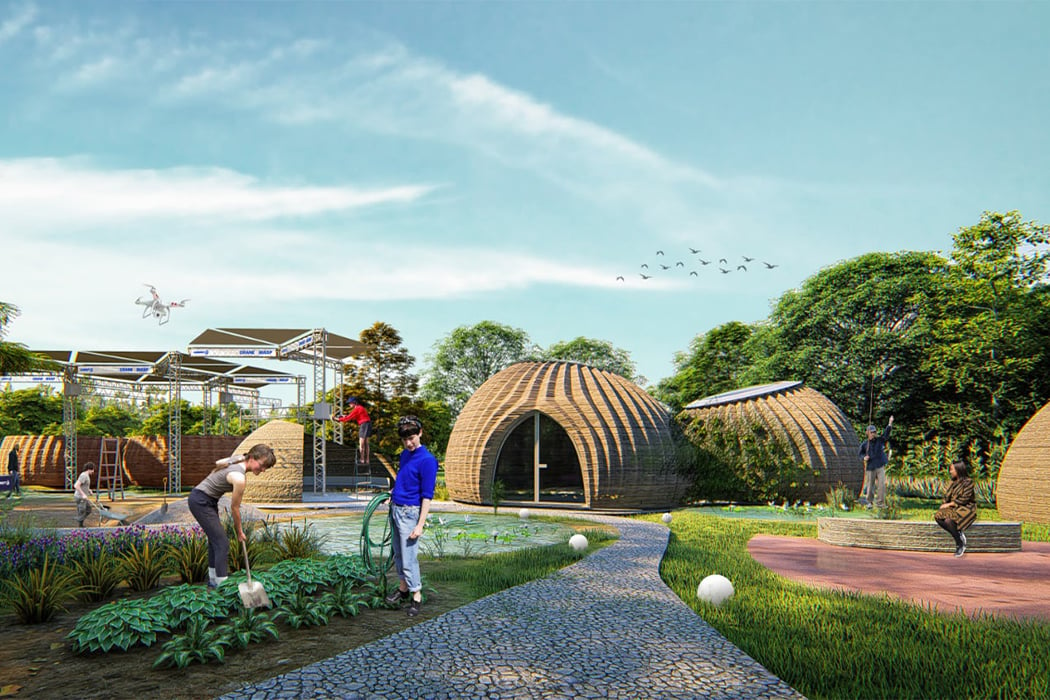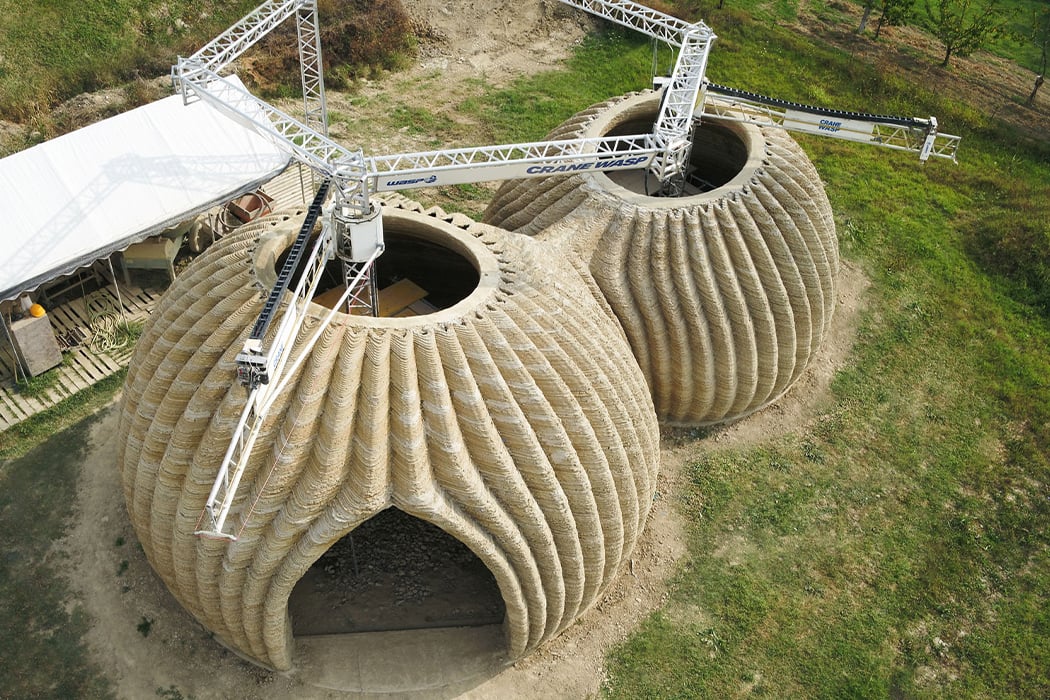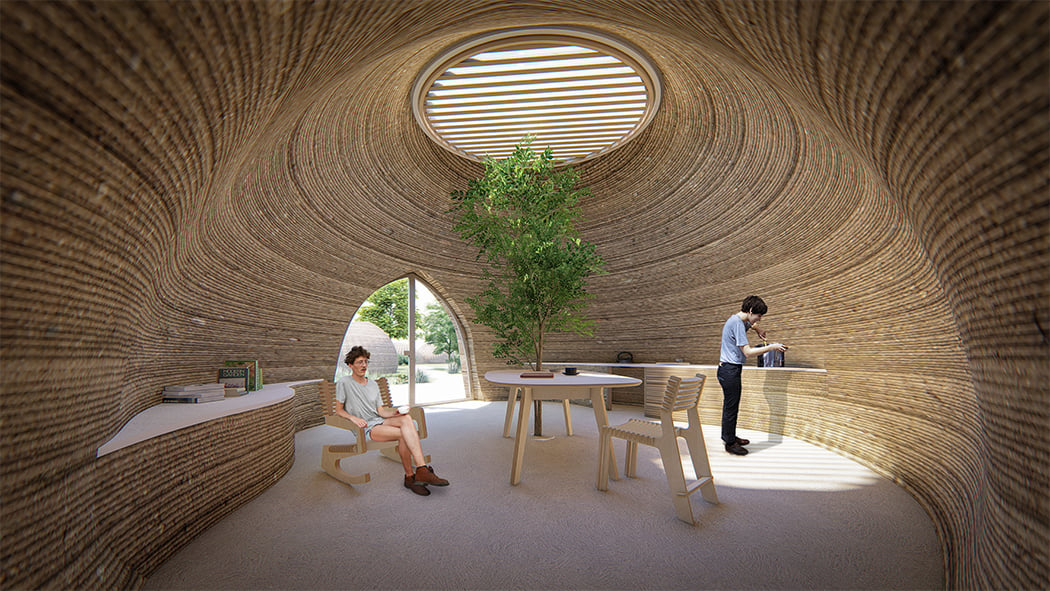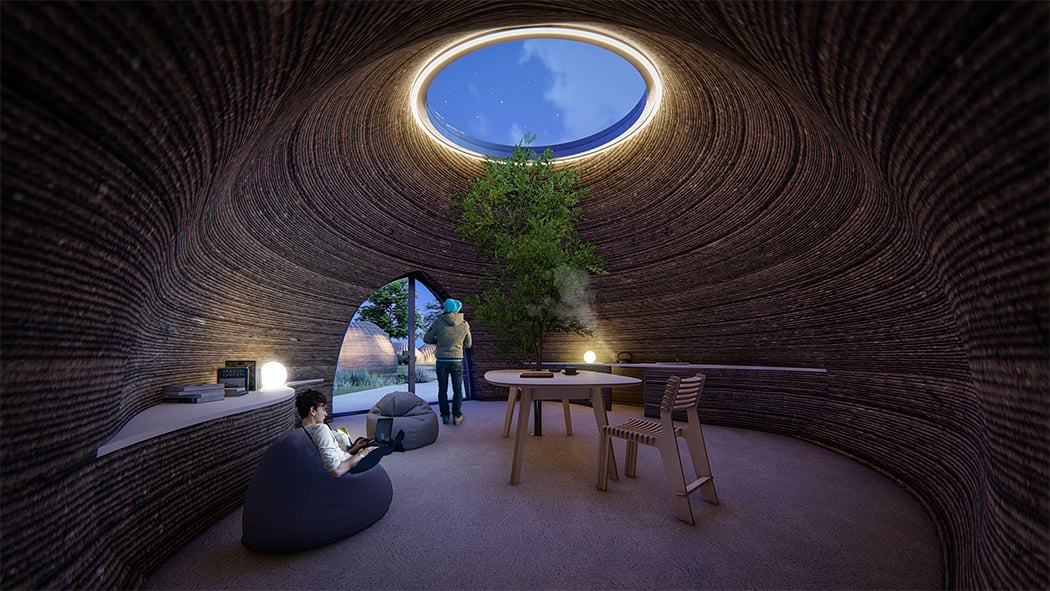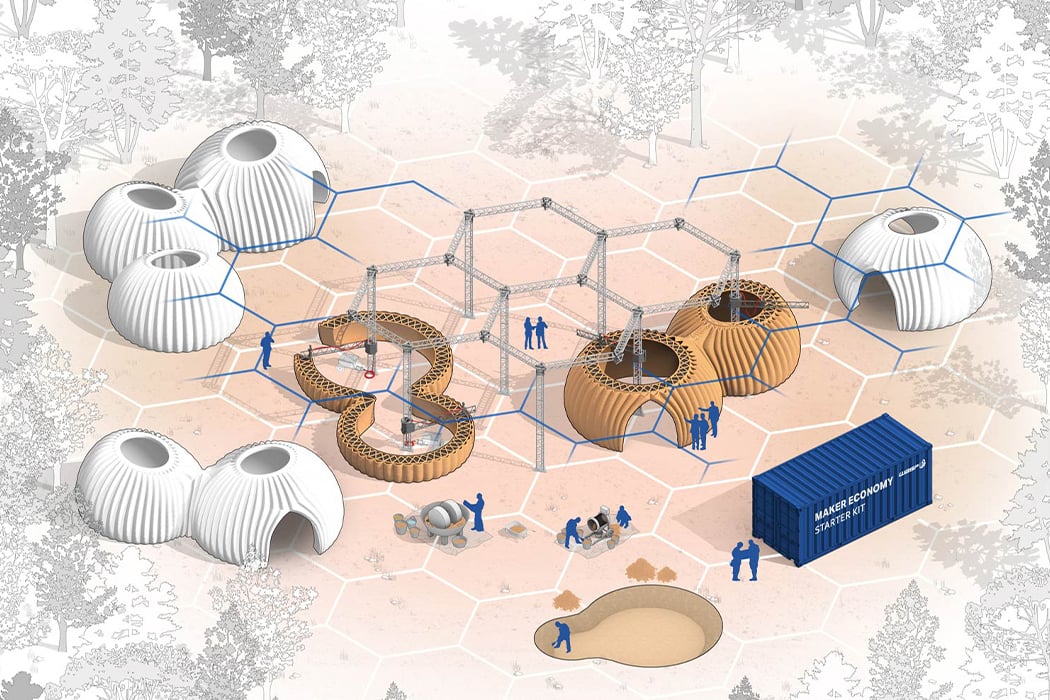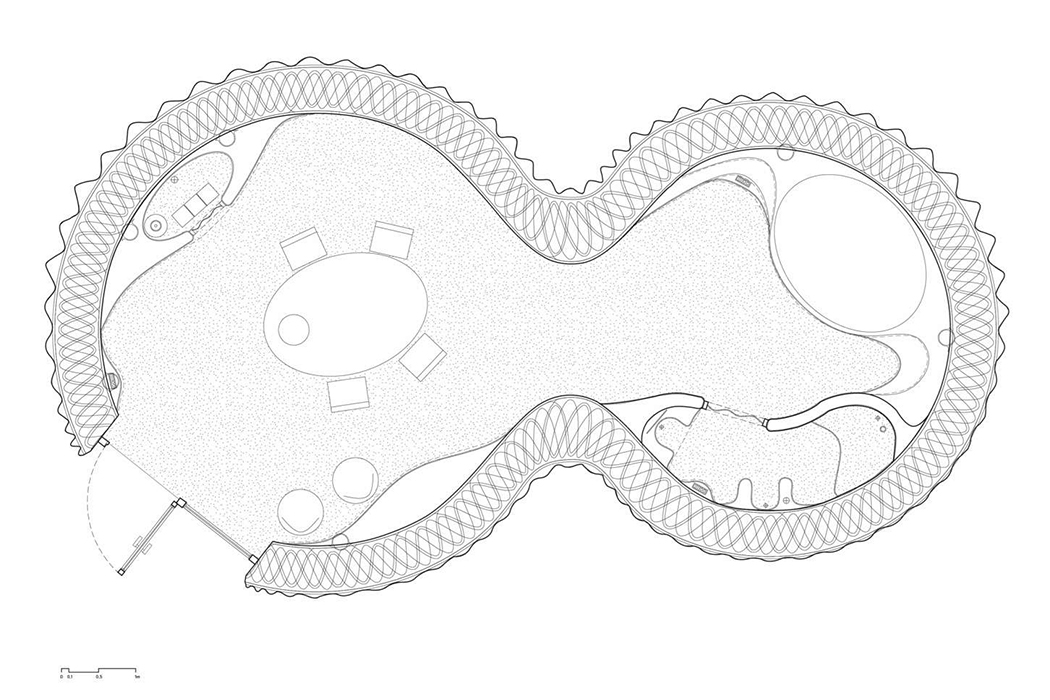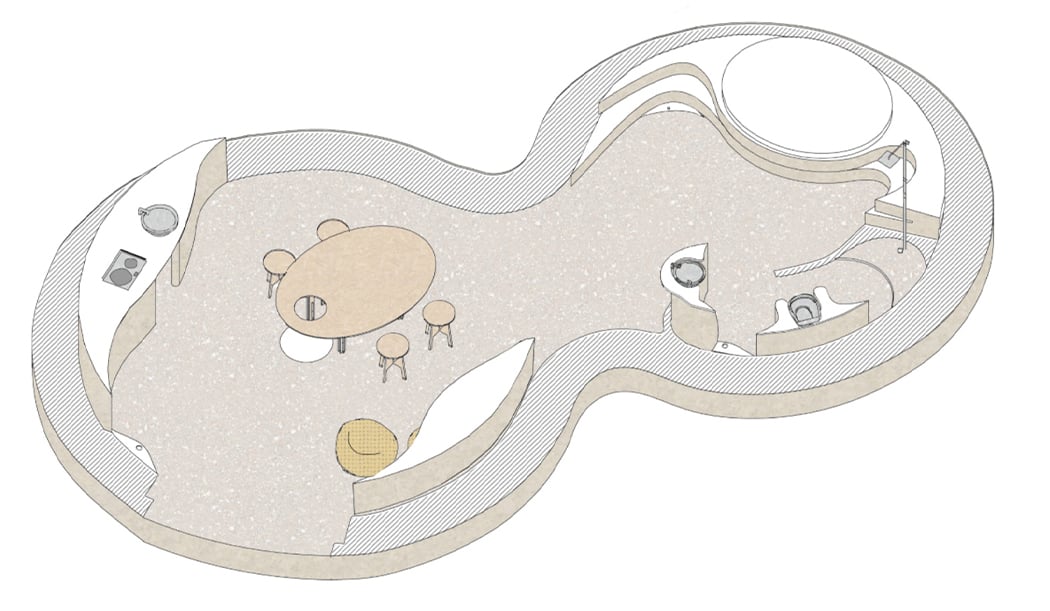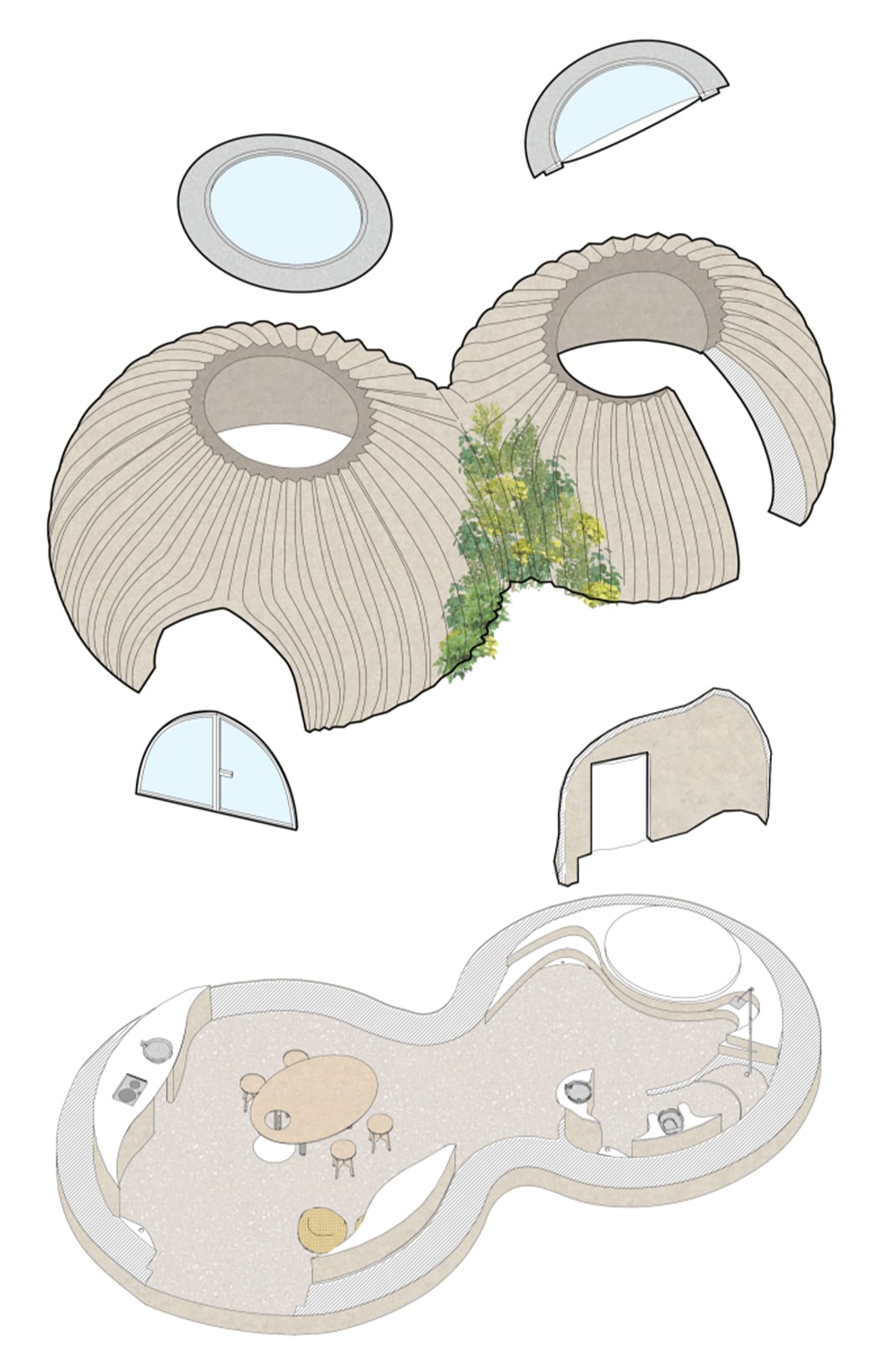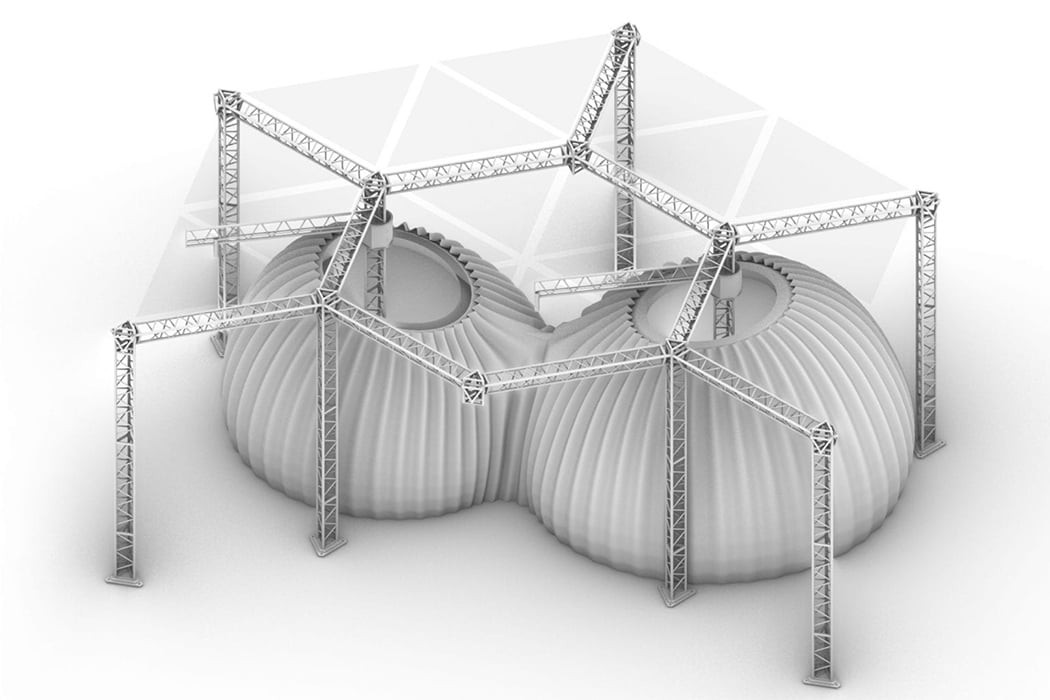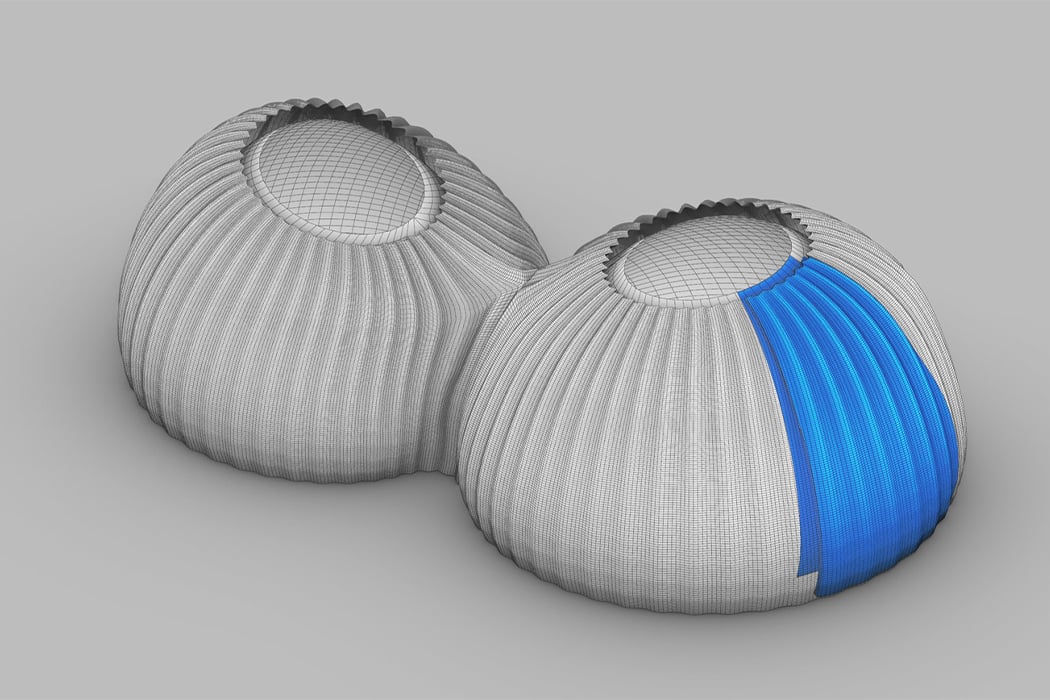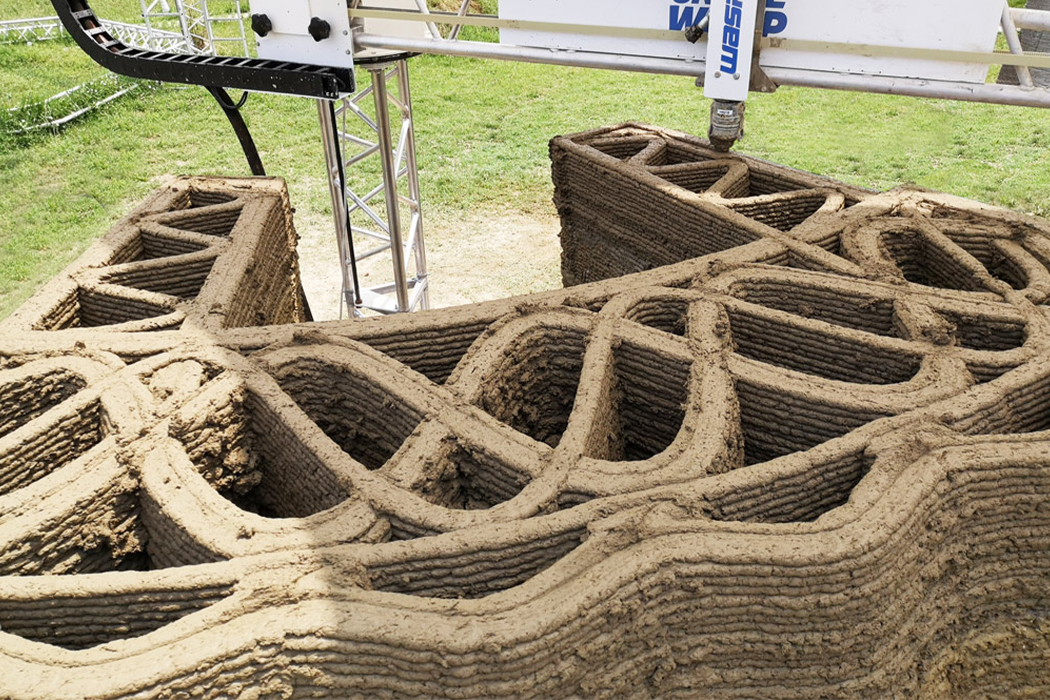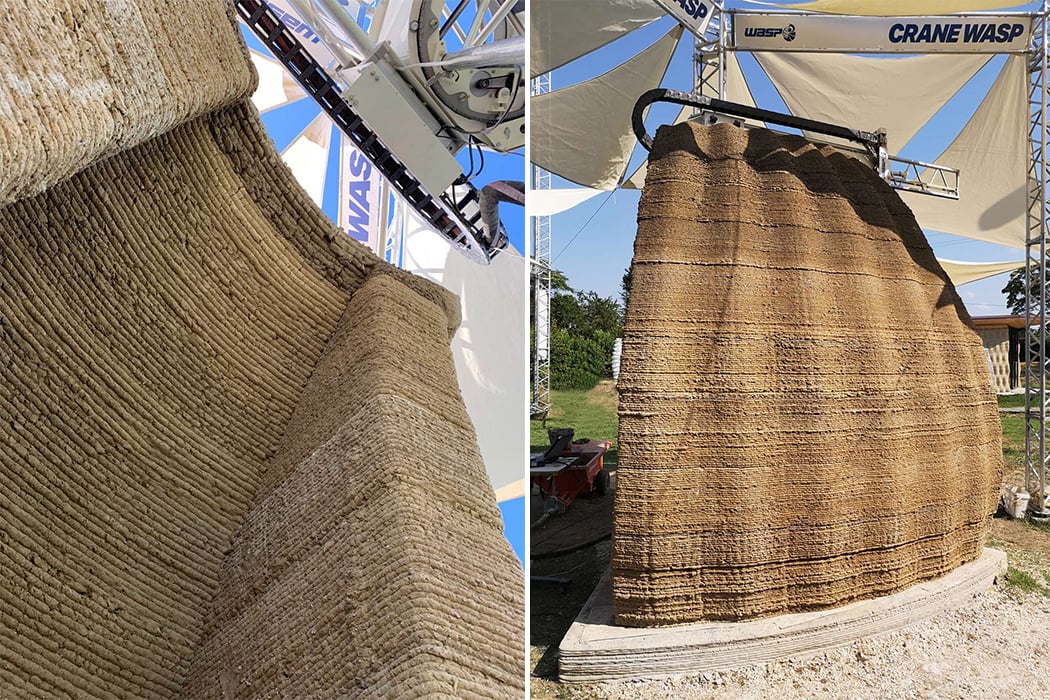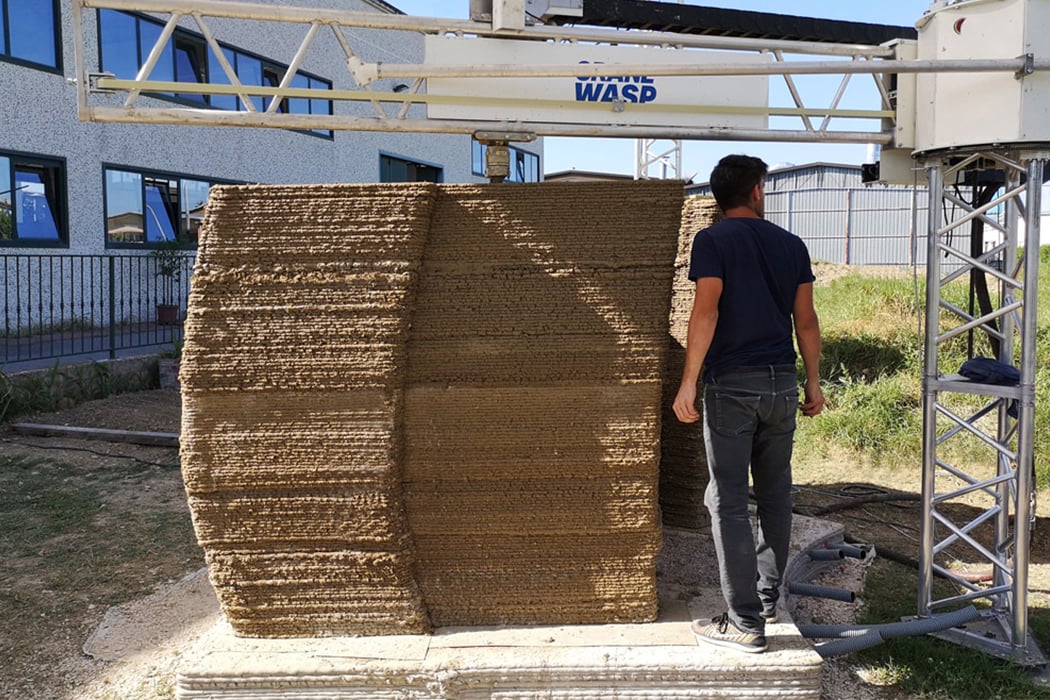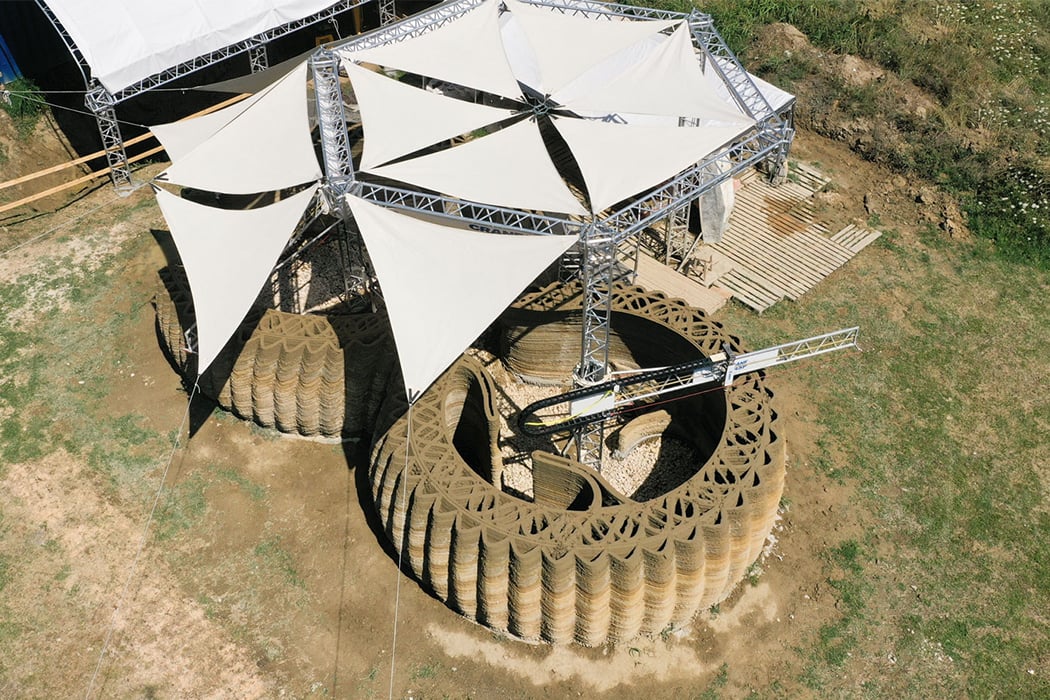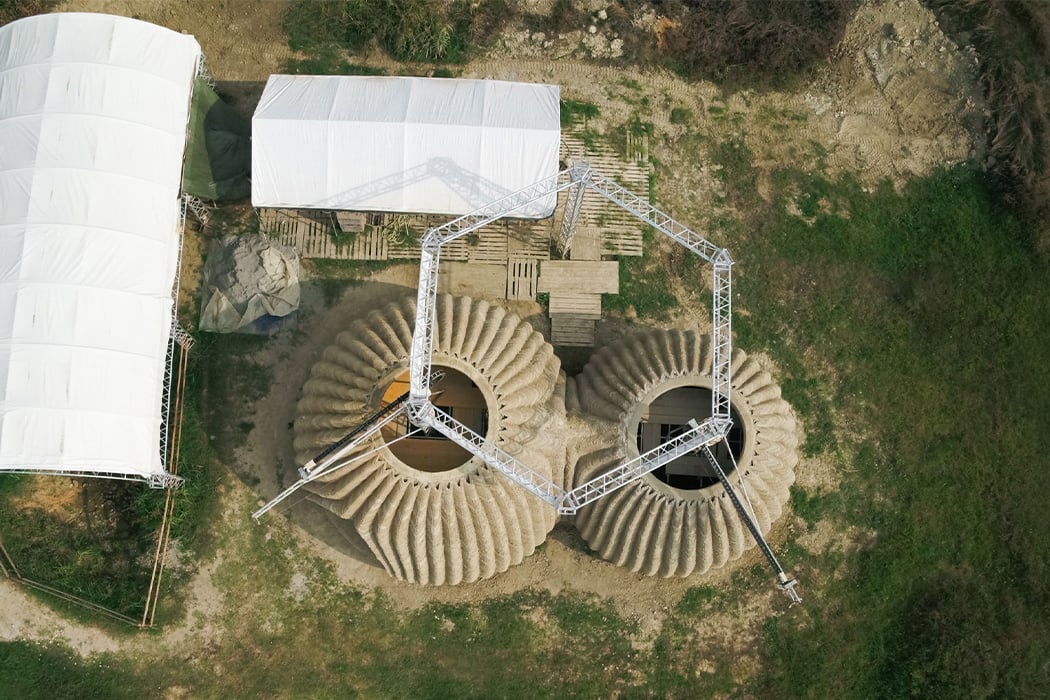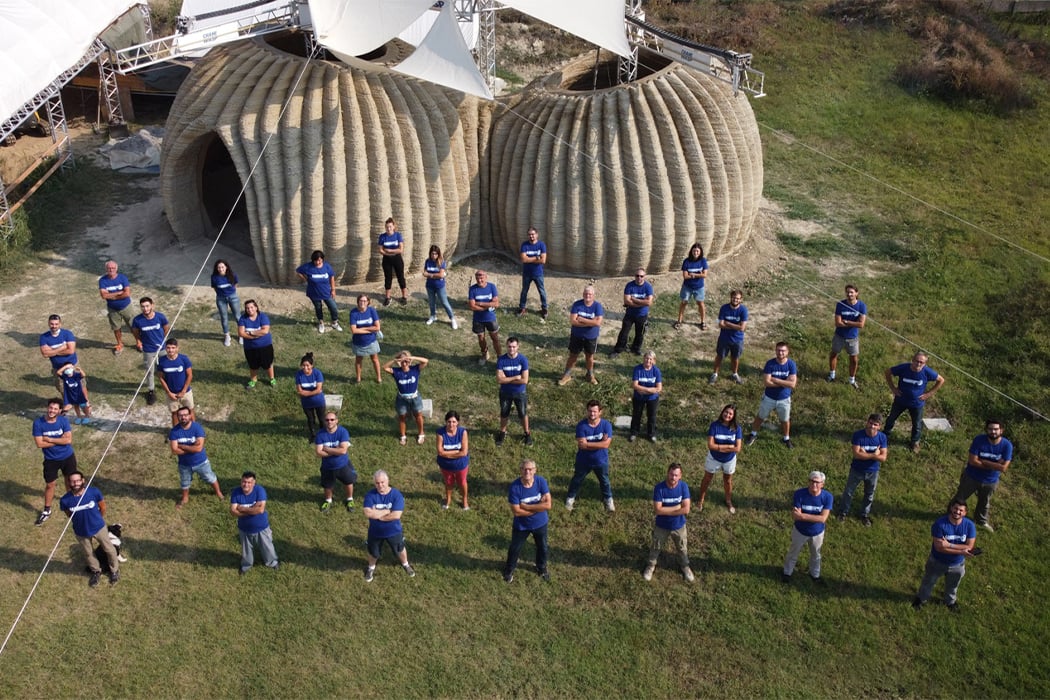Sustainable designs are now taking center stage in the design world as we battle the climate crisis affecting several industries. To implement sustainability in architecture is trickier given the scale of design but if we find the right solutions, the impact will also be big enough to cause ripples of positive changes. Fun fact: it is not the aviation industry but actually the construction industry that contributes to the global greenhouse gas emissions and the difference is 2% vs 39%. In fact, cement alone is responsible for 8% of global greenhouse gas emissions which is why the need for more sustainably constructed housing arose. Mario Cucinella Architects and WASP decided to do something about it and designed TECLA – a completely 3D printed global habitat based on natural materials.
TECLA’s construction started as a prototype in 2019 near Bologna, Italy as a response to pressing societal issues of explosive population growth which inevitably led to a lack of affordable accommodation. TECLA is created using entirely reusable, recyclable materials taken from the local terrain – it aims to be a model for circular housing as well as eco-housing. The habitat has been designed by Mario Cucinella Architects and brought to life by WASP’s engineering and printing tech. TECLA is set to be the first house to be entirely 3D-printed using locally sourced clay which has been used for centuries in countries like India as a cost-effective and environmentally friendly alternative to cement – clay is a biodegradable and recyclable material that will make the building a zero-waste structure. The project’s name comes from an imaginary city described by writer Italo Calvino, it will be built using multiple collaborative 3D-printers all working at the same time – a feat in itself given the scale.
The housing is designed and built to adapt to multiple environments as well as be suitable for self-production using WASP’s ‘maker economy starter kit’. This reduces industrial waste and boosts national + local economies using a sustainable model that involves the residents which will strengthen the community along with the environment’s health. It was all developed using extensive research undertaken by the SOS (School Of Sustainability), an institution founded by Mario Cucinella himself. This valuable research explored the cause and effects of homelessness based on case studies in locations with different climates. As a result, the two firms designed a resilient housing community for any climate while being energy-efficient, unlike traditional housing and construction models. TECLA is also being looked at as a case study that can become the basis for off-the-grid autonomous eco-cities – the future is here!
Designers: Mario Cucinella Architects and WASP
